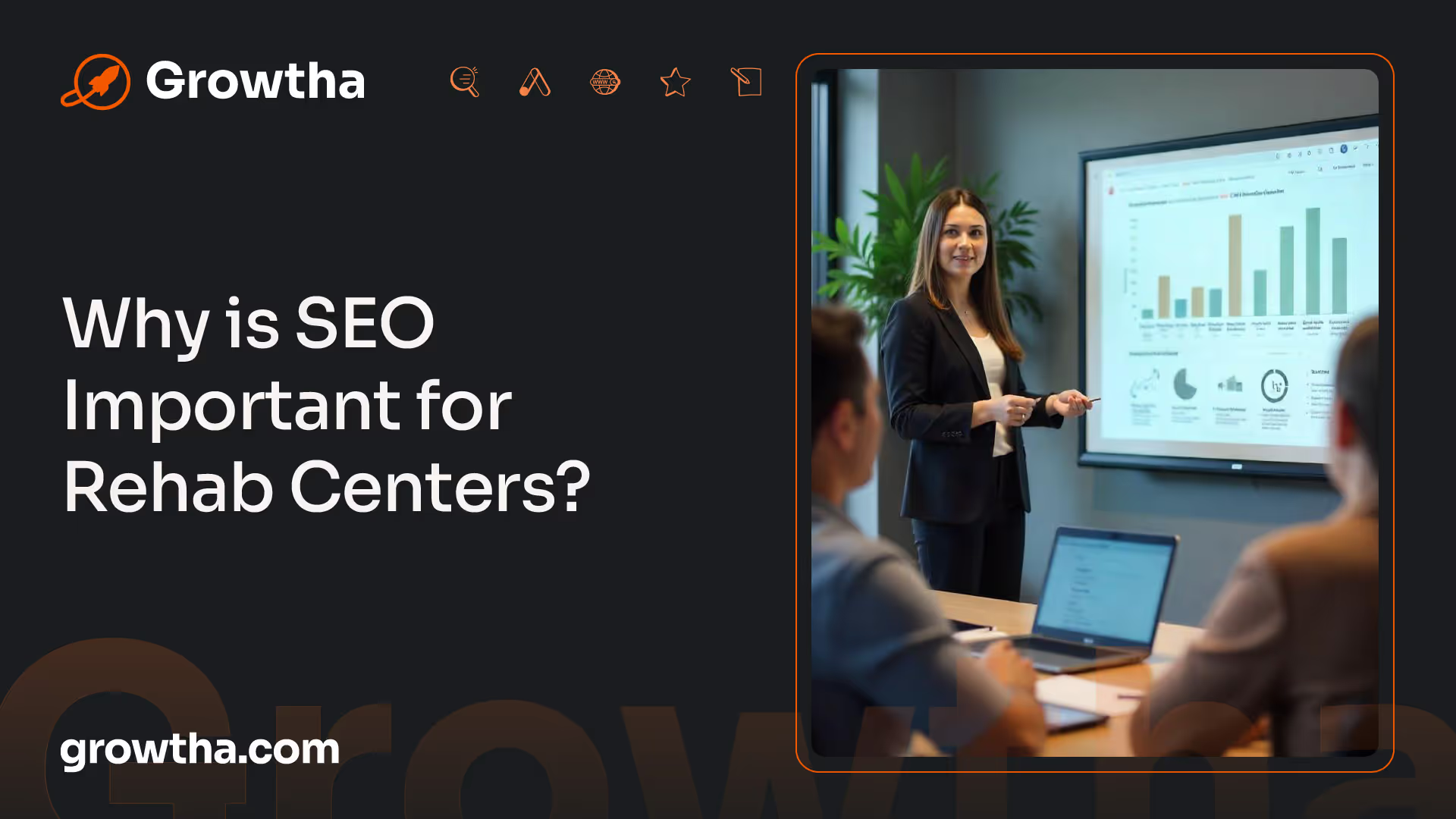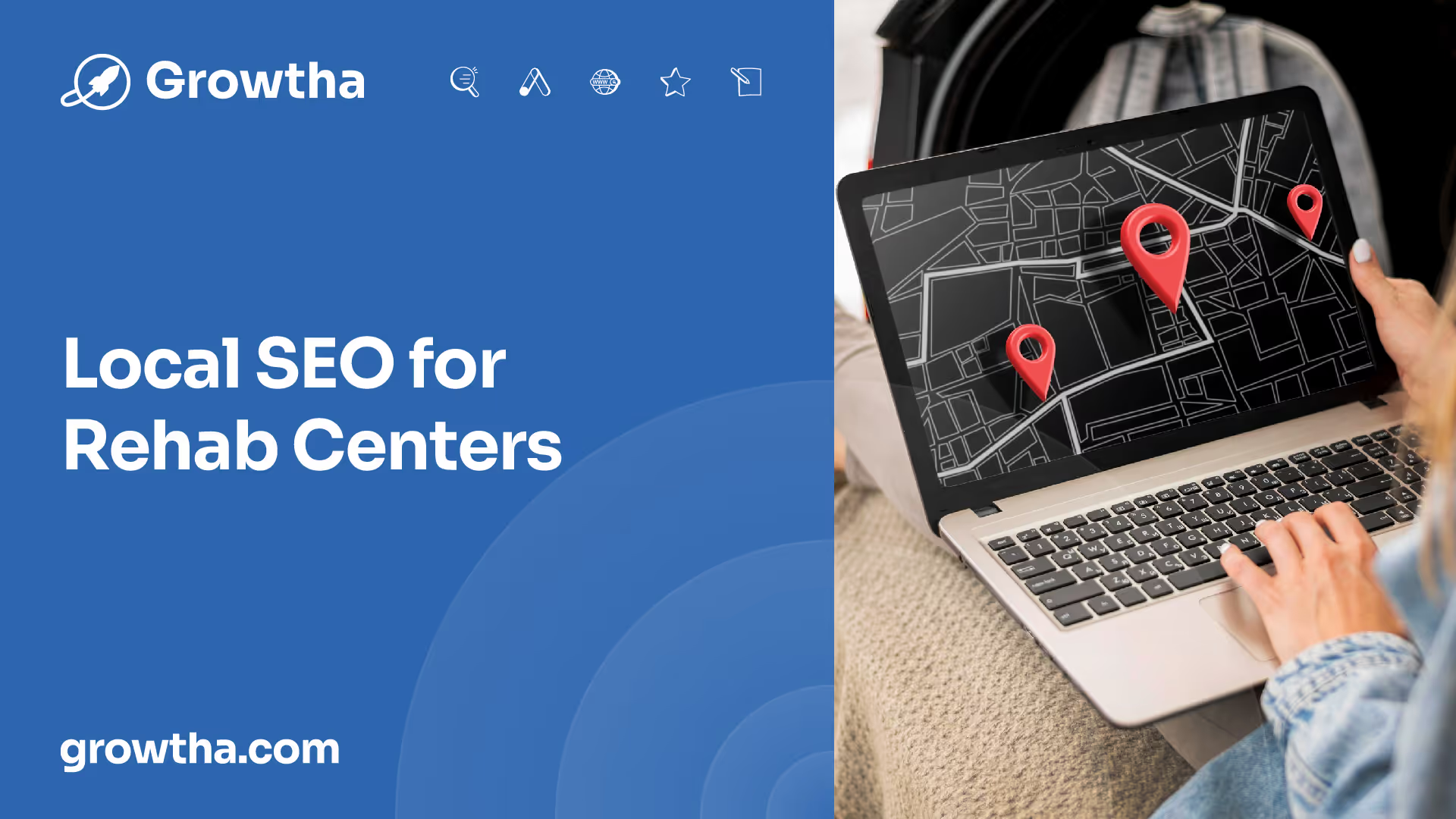What is Rehab SEO?
To effectively promote rehab centers online, it is essential to understand the concept of Rehab SEO (Search Engine Optimization).


What is Rehab SEO?

Understanding Rehab SEO
To effectively promote rehab centers online, it is essential to understand the concept of Rehab SEO (Search Engine Optimization). This section will provide an overview of what Rehab SEO entails and why it is crucial for rehab centers.
What is Rehab SEO?
Rehab SEO refers to the practice of optimizing a rehab center's website and online presence to improve its visibility in search engine results. It involves implementing various strategies and techniques to enhance the website's ranking and attract more organic traffic from search engines like Google, Bing, and Yahoo.

Rehab SEO involves optimizing both the on-page and off-page elements of a rehab center's website. This includes conducting keyword research, optimizing website content, improving site structure and navigation, building high-quality backlinks, and more.
By implementing these strategies, rehab centers can improve their online visibility, reach their target audience, and ultimately increase the number of inquiries and admissions.
Why is SEO Important for Rehab Centers?
SEO plays a pivotal role in the digital marketing strategy of rehab centers. Here are some key reasons why SEO is important:
- Increased Online Visibility: With proper SEO techniques, rehab centers can improve their search engine rankings, making it easier for potential clients to find them when searching for relevant keywords or phrases. Increased online visibility can lead to higher website traffic and more inquiries.
- Targeted Traffic: SEO allows rehab centers to target specific keywords and phrases that are relevant to their services. By optimizing their website for these keywords, they can attract highly targeted traffic from individuals actively seeking rehab services.
- Credibility and Trust: A strong SEO presence can help establish trust and credibility among potential clients. When a rehab center appears higher in search engine results, it gives the impression of being a reputable and trusted source of information and treatment.
- Cost-Effective Marketing: Compared to traditional marketing methods, SEO can be a cost-effective way for rehab centers to market their services. By optimizing their website and content, they can attract organic traffic without having to rely solely on paid advertising.
- Long-Term Results: SEO is a long-term marketing strategy that can provide ongoing benefits. Once a rehab center's website is properly optimized and starts ranking well, it can continue to attract organic traffic and generate leads for an extended period.
By understanding and implementing effective Rehab SEO strategies, rehab centers can improve their online visibility, reach their target audience, and ultimately help more individuals in need of their services.
Key Elements of Rehab SEO
To effectively optimize a rehab center's online presence, there are key elements of SEO that should be considered. These elements include keyword research and optimization, on-page optimization, and off-page optimization.
Keyword Research and Optimization
Keyword research plays a vital role in rehab SEO as it helps identify the specific words and phrases potential patients are using when searching for rehab centers. By understanding these keywords, rehab centers can optimize their website content to match the search intent of their target audience.
To conduct effective keyword research, it's important to consider factors such as search volume, competition, and relevance. Tools like Google Keyword Planner and SEMrush can assist in identifying relevant keywords and providing insights into their performance.
Once the keywords are identified, they should be strategically incorporated into the website's content. This includes using them naturally in page titles, headings, body text, and meta tags. However, it's important to avoid keyword stuffing, as it can negatively impact the user experience and search engine rankings.
On-Page Optimization
On-page optimization refers to the process of optimizing individual web pages to improve their visibility and relevance to search engines. This includes various aspects such as optimizing page titles, meta descriptions, headers, and URL structures.
By optimizing these on-page elements, rehab centers can provide search engines with clear signals about the content and purpose of their web pages. This, in turn, can help improve their search engine rankings and attract more organic traffic.
Additionally, on-page optimization involves creating high-quality and relevant content that addresses the needs and interests of potential patients. By producing informative and engaging content, rehab centers can establish themselves as authorities in their field and build trust with their audience.
Off-Page Optimization
Off-page optimization focuses on improving a rehab center's online presence and reputation beyond its own website. This includes strategies such as link building, social media engagement, and online directory listings.
Building high-quality backlinks from reputable websites can boost a rehab center's credibility and authority in the eyes of search engines. This can be achieved through tactics such as guest blogging, creating shareable content, and engaging with industry influencers.
Social media engagement is another important aspect of off-page optimization. By actively participating in relevant social media platforms and sharing valuable content, rehab centers can increase their visibility and reach a wider audience.
Additionally, listing the rehab center's information in local directories and review websites can improve its visibility in local search results. This is especially important for attracting potential patients who are searching for rehab centers in their specific area.
By focusing on keyword research and optimization, on-page optimization, and off-page optimization, rehab centers can enhance their online presence and improve their visibility in search engine results.
Implementing these key elements of rehab SEO can help attract more qualified traffic and ultimately increase the chances of reaching and assisting individuals in need of rehab services.

Creating Content for Rehab SEO
When it comes to rehab SEO, creating high-quality and relevant content is essential for improving search engine rankings and attracting the right audience.
In this section, we'll explore the key aspects of content creation for rehab SEO, including producing high-quality and relevant content, incorporating keywords naturally, and optimizing meta tags and descriptions.

High-Quality and Relevant Content
Producing high-quality and relevant content is the foundation of effective rehab SEO. It's important to create content that provides value to your target audience and addresses their specific needs and concerns. By offering informative and engaging content, you can establish your rehab center as a trusted resource in the industry.
To create high-quality and relevant content, consider the following strategies:
- Conduct thorough research on the topics that resonate with your target audience.
- Provide accurate and up-to-date information about addiction treatment, recovery, and related topics.
- Offer practical tips, advice, and insights that can help individuals seeking rehab services.
- Incorporate personal stories, testimonials, and success stories to connect with your audience on an emotional level.
By consistently producing high-quality and relevant content, you can not only improve your search engine rankings but also build trust and credibility among your potential clients.

Incorporating Keywords Naturally
Keywords play a crucial role in rehab SEO as they help search engines understand the relevance of your content. However, it's important to incorporate keywords naturally and avoid keyword stuffing, which can negatively impact the user experience and search engine rankings.
Here are some tips for incorporating keywords naturally:
- Conduct keyword research to identify relevant and high-ranking keywords in the rehab industry.
- Use keywords strategically in the titles, headings, and body of your content.
- Prioritize user experience by focusing on creating valuable content rather than overusing keywords.
- Use variations of your target keywords to enhance the natural flow of your content.
By incorporating keywords naturally, you can optimize your content for search engines while ensuring a positive user experience.

Optimizing Meta Tags and Descriptions
Optimizing meta tags and descriptions is another crucial aspect of content creation for rehab SEO. Meta tags and descriptions provide a brief summary of your web pages in search engine results, influencing the click-through rates and visibility of your content.
Consider the following tips for optimizing meta tags and descriptions:
- Craft compelling and concise meta titles that accurately represent the content of your web pages.
- Write informative and engaging meta descriptions that entice users to click on your links.
- Incorporate relevant keywords naturally within your meta tags and descriptions.
- Keep meta titles under 60 characters and meta descriptions under 160 characters to ensure they are displayed properly in search results.
By optimizing your meta tags and descriptions, you can improve the visibility and click-through rates of your content, ultimately driving more traffic to your rehab center's website.
Creating high-quality and relevant content, incorporating keywords naturally, and optimizing meta tags and descriptions are key elements of successful rehab SEO. By implementing these strategies, you can enhance your online visibility, attract the right audience, and establish your rehab center as a trusted resource in the industry.

Technical Aspects of Rehab SEO
When it comes to optimizing a rehab center's website for search engines, there are several technical aspects that play a crucial role in improving its visibility and ranking. In this section, we will explore three key areas of technical SEO: mobile-friendly website design, site speed optimization, and URL structure and site navigation.
Mobile-Friendly Website Design
In today's digital era, having a mobile-friendly website is no longer an option, but a necessity. With the increasing use of smartphones and tablets, it's essential for rehab centers to ensure that their websites are optimized for mobile devices.
A mobile-friendly design provides a better user experience and can positively impact search engine rankings.
To create a mobile-friendly website, rehab centers should consider implementing responsive design. This design approach allows the website to automatically adjust and adapt its layout to fit different screen sizes, providing a seamless browsing experience for users across devices. It eliminates the need for separate mobile and desktop versions of the website, making it easier to manage and maintain.
Site Speed Optimization
Site speed is a critical factor in both user experience and search engine rankings. A slow-loading website can lead to high bounce rates and a negative impact on SEO. To optimize site speed, rehab centers should focus on factors such as minimizing server response time, optimizing images, and reducing unnecessary code.
One effective way to improve site speed is through caching. By implementing browser caching and server-side caching, rehab centers can store certain elements of their website in a user's browser or on a server, reducing the need to retrieve files each time a page is visited.
This can significantly improve loading times and enhance the overall user experience.

URL Structure and Site Navigation
The structure of URLs and the navigation of a rehab center's website play a role in both user experience and search engine optimization. A well-structured URL and intuitive navigation help search engines understand the content and hierarchy of the website, making it easier for them to index and rank the pages.
When it comes to URL structure, it's important to use descriptive and keyword-rich URLs that accurately represent the content of the page. This not only helps search engines understand the relevance of the page but also provides users with a clear idea of what they can expect when they click on the link.
In terms of site navigation, rehab centers should aim for a logical and user-friendly menu structure. This includes organizing pages into categories and subcategories, providing clear labels for menu items, and ensuring that the navigation is consistent across the website.
A well-designed site navigation enhances user experience and allows search engines to crawl and index the website more effectively.
By focusing on these technical aspects of rehab SEO, rehab centers can optimize their websites for better visibility and improved search engine rankings.
A mobile-friendly website design, fast-loading pages, and a well-structured URL and site navigation contribute to a positive user experience and can ultimately attract more organic traffic to the rehab center's website.

Local SEO for Rehab Centers
When it comes to rehab centers, local search engine optimization (SEO) plays a crucial role in attracting potential patients in the local area. By implementing effective local SEO strategies, rehab centers can increase their online visibility and connect with individuals seeking their services. Here are three key elements of local SEO for rehab centers:
Claiming and Optimizing Google My Business Listing
Claiming and optimizing a Google My Business (GMB) listing is essential for rehab centers. GMB is a free tool provided by Google that allows businesses to manage their online presence on Google Search and Maps.
By claiming and optimizing their GMB listing, rehab centers can provide accurate and up-to-date information to potential patients.
Optimizing a GMB listing involves providing detailed information about the rehab center, such as the name, address, phone number, website, and operating hours. It's important to ensure that all information is accurate and consistent across various online platforms.
Additionally, rehab centers can utilize GMB features like posts, reviews, and Q&A to engage with their audience and showcase their services. Encouraging satisfied patients to leave positive reviews can also boost the center's reputation and attract more potential patients.
Read: Rehab Center Design Trends
Local Directory Listings
Listing rehab centers in local directories is another effective local SEO strategy. Local directories are online platforms that provide information about businesses in a specific area.
By submitting accurate and consistent information to local directories, rehab centers can improve their online visibility and increase their chances of appearing in local search results.
When listing rehab centers in local directories, it's important to provide complete and up-to-date information, including the name, address, phone number, and website. Consistency in the information across directories is crucial for search engines to recognize and validate the rehab center's credibility.
Localized Keyword Targeting
Targeting localized keywords is crucial for rehab centers to rank higher in local search results. Localized keywords include location-specific terms that potential patients are likely to use when searching for rehab centers in their area.
By incorporating these keywords strategically into their website content, rehab centers can increase their chances of appearing in local search results.
Localized keywords can include terms like "rehab center in [city]," "[city] addiction treatment," or "drug rehab near me." Conducting keyword research to identify relevant localized keywords is essential for effective optimization.
By focusing on these keywords, rehab centers can attract more local traffic and increase their chances of converting potential patients into actual patients.
Implementing these local SEO strategies can significantly improve the online visibility and reach of rehab centers, enabling them to connect with individuals in need of their services.
By claiming and optimizing their Google My Business listing, listing in local directories, and targeting localized keywords, rehab centers can establish a strong online presence in their local area and stand out from the competition.

Measuring Success and Staying Ahead
To ensure the effectiveness of your rehab center's SEO efforts, it's crucial to measure success, stay updated with SEO trends and algorithm changes, and continuously optimize and improve your strategies.
This section will explore three key aspects of achieving and maintaining SEO success: tracking and analyzing SEO performance, staying updated with SEO trends and algorithm changes, and continuous optimization and improvement.
Tracking and Analyzing SEO Performance
Tracking and analyzing the performance of your rehab center's SEO efforts is essential for evaluating the effectiveness of your strategies and making informed decisions for improvement.
By monitoring key metrics and data, you can gain insights into the performance of your website and identify areas that require adjustment or enhancement.
Some important metrics to track include:
By regularly monitoring these metrics and analyzing the data, you can identify trends, spot areas for improvement, and make data-driven decisions to enhance your rehab center's SEO performance.
Staying Updated with SEO Trends and Algorithm Changes
SEO is a dynamic field that constantly evolves with changes in search engine algorithms and user behavior. Staying updated with the latest SEO trends and algorithm changes is crucial to ensure that your rehab center's website remains optimized and visible to your target audience.
To stay ahead, consider the following strategies:
- Follow reputable SEO blogs and industry publications to stay informed about the latest trends and news.
- Participate in webinars, conferences, and workshops focused on SEO and digital marketing.
- Engage with SEO communities and forums to learn from experts and share knowledge.
- Regularly review Google's algorithm updates and guidelines to align your strategies with best practices.
By staying updated, you can adapt your rehab center's SEO strategies to align with the latest trends and algorithm changes, helping to maintain and improve your website's visibility and rankings.
Continuous Optimization and Improvement
SEO is an ongoing process that requires continuous optimization and improvement. To ensure long-term success, it's important to regularly review and refine your rehab center's SEO strategies.
Consider the following areas for optimization and improvement:
By continuously optimizing and improving your rehab center's SEO strategies, you can maintain a strong online presence, attract organic traffic, and stay ahead of your competitors.
Remember, SEO is an ongoing effort that requires patience and persistence. By tracking performance, staying updated, and continuously optimizing your strategies, you can achieve long-lasting success in driving organic traffic and generating leads for your rehab center.
Conclusion
Rehab SEO is an essential part of any rehab center's digital marketing strategy. By optimizing your website for search engines, you can improve your online visibility and attract more potential patients. If you're not already investing in Rehab SEO, now is the time to start.
Sources
- https://sachsmarketinggroup.com/seo-for-drug-rehabs
- https://www.webfx.com/rehab-addiction-treatment/seo/
- https://medium.com/seo-consultant/drug-rehab-seo
- https://digitaldot.com/addiction-treatment/rehab-seo/
- https://webserv.io/resources/blog/drug-rehab-seo/
- https://www.digitalauthority.me/start-drug-rehab-seo
- https://leadtorecovery.com/rehab/seo/







